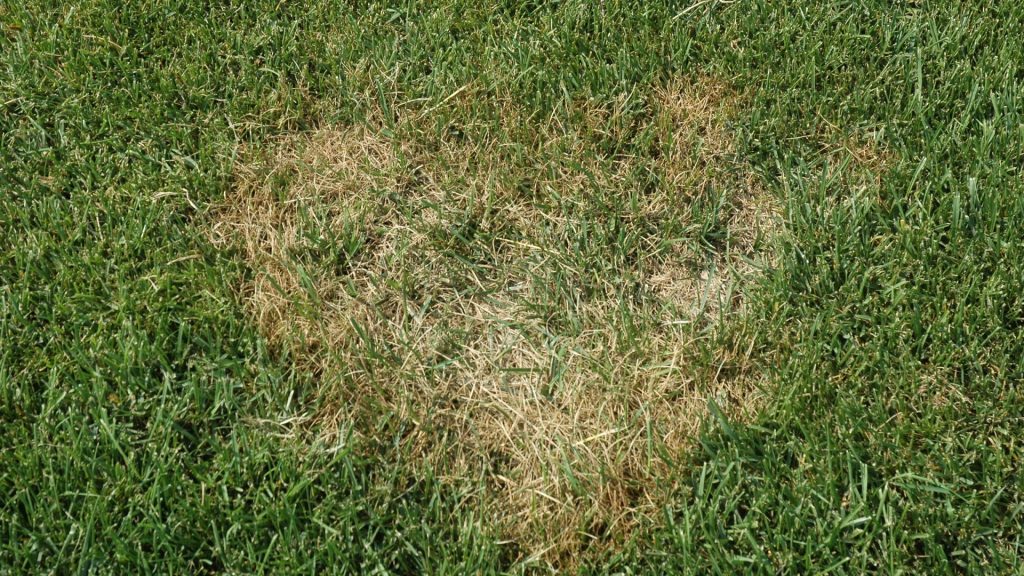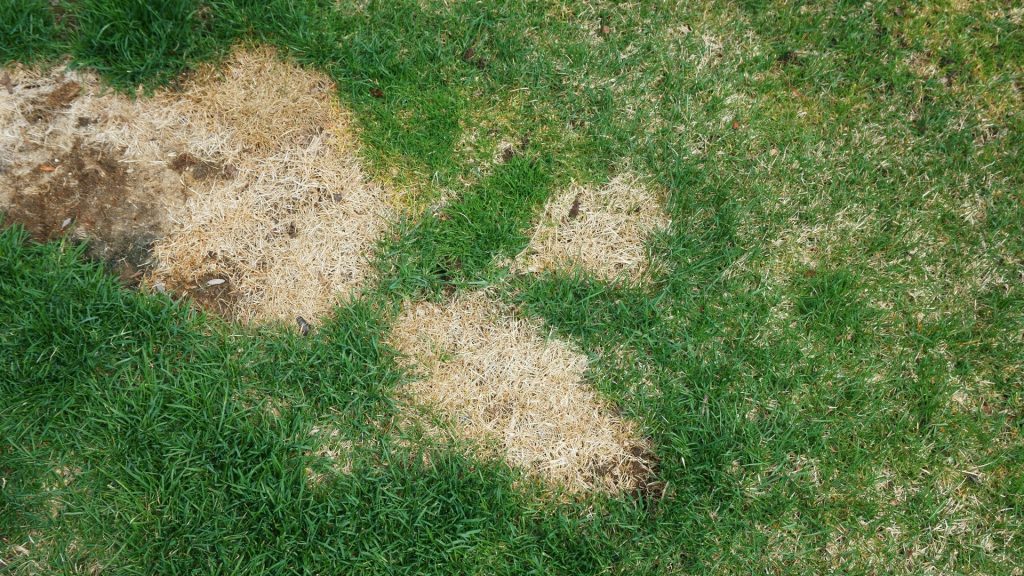
Your Ultimate Guide To Lawn Fungus And How To Get Rid Of It
If you’ve been trying to get a beautiful green lawn but it’s looking brown and patchy, you could be dealing with lawn fungus.
While fungal spores are present in every lawn, and they can even benefit your lawn when they start to multiply and spread they can become a real problem for your lawn.
Won’t lawn fungus go away on its own? Although it would be great for your lawn fungus to disappear on its own, unfortunately, it won’t – you will have to treat it with effective removal methods.
If you’re not sure how to do this, don’t worry. Here’s your ultimate guide to lawn fungus and how to get rid of it once and for all.
How To Identify Lawn Fungus In Your Grass
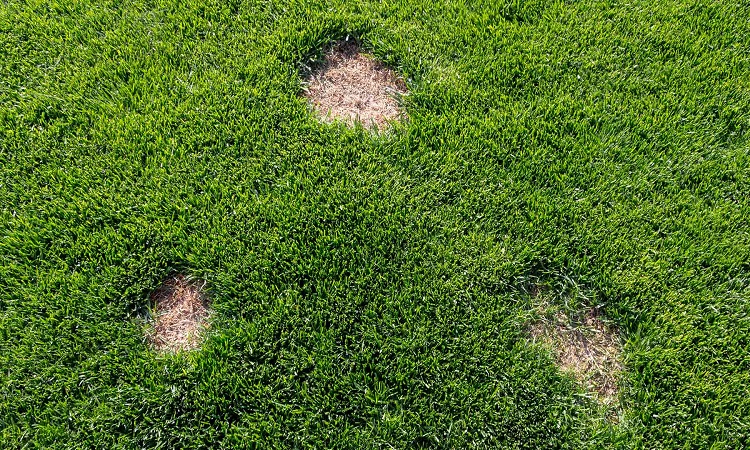
There are many different signs that your grass is being targeted by lawn fungus – brown and patchy areas are just one! Here are some of the signs to keep an eye out for when scrutinizing your lawn.
- Pale-colored round patches: This is common with snow mold and since it’s commonly found in areas of moss, if your grass has some moss in it then this is a likely fungal symptom you will notice. This fungus will show up late in the winter when the snow starts to melt.
- Orange-red spots: This is symptomatic of rust disease. You’ll see spots on the grass that look like rust because they are orange and red in color.
- Yellow patches: Red thread disease is a type of fungus that can affect your lawn. It produces yellow patches on the grass.
- Dollar spots: These fungus spots are the size of a dollar coin, hence their name. They are pale and become sunken in the grass. These spots tend to crop up when there’s lots of dew and the nights are cool, such as during spring.
- Fairy rings: These rings are large circles of brown or pale-colored grass. Although they form a circle, within their borders the grass can look healthy and normal.
- White film: If you’re seeing what looks like a white film across large areas of your grass, this is mildew. You’re likely to especially find it in shady areas of the lawn.
So, What Can You Do About Lawn Fungus?
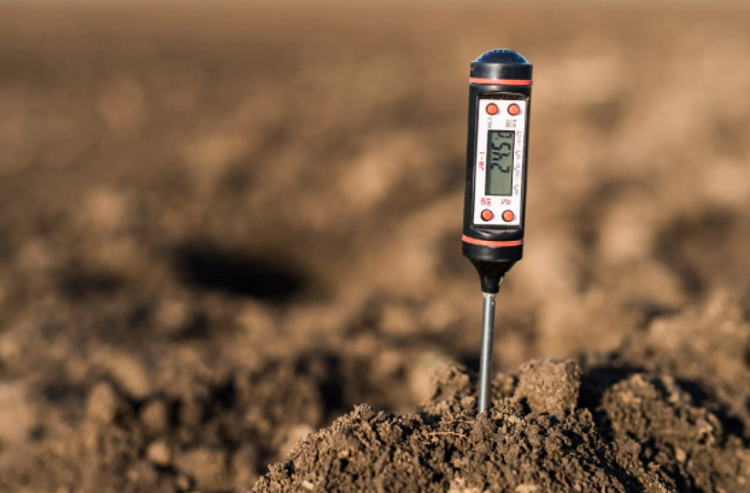
There are some essential things you should do if you suspect your lawn is suffering from fungus. These will help you to better manage and eliminate it.
- Do a soil test. First things first, it helps to do a soil test to find out if your lawn is suffering from any nutrient deficiencies. These can cause your lawn to be less than healthy, which makes it a target for disease.
- Ensure good air circulation in the soil. Aerating your lawn, which you should do annually, means loosening the soil. This reduces soil compaction and it encourages roots to pull up nutrients as well as grow healthily.
- Use a top dressing. An organic, rich top dressing for the soil can improve the soil, prevent disease, and increase soil drainage.
- Remove thatch. Thatch, which is the layer of organic matter that builds up on the grass, can cause the soil to lack aeration. You should remove it regularly, such as with a power rake.
- Choose organic lawn products. Synthetic fertilizers are filled with chemicals that can disrupt the ecosystem of your lawn. This can allow disease organisms to grow and spread. An organic product can help your lawn to be more balanced.
- Choose a slow-release fertilizer. This type of fertilizer should be applied according to the instructions on the bag. This will prevent you from putting too much or too little fertilizer on your soil, both of which can lead to an unhealthy lawn that can be a target for fungus.
- Water your lawn early in the morning. This lets the blades of grass dry throughout the day. Only give your lawn about an inch of water every week. Deep, infrequent watering allows the grass to better absorb moisture.
- Mow correctly. If you’re mowing your lawn that already has some diseased patches of fungus, make sure you disinfect and wash the underside of your lawnmower after use so that you don’t spread it around. You should also mow with sharp mower blades and stick to the correct cutting height. Set your mower to a cutting height of between 3 and 3.5 inches.
- Encourage better air circulation. Many types of lawn fungi thrive in shady, moist conditions. You should cut back shrubs and trees that cast shade over your lawn to encourage better air circulation.
- Don’t walk on heavy snow. If your garden is filled with heavy snow, don’t walk on it. This will compact it and it can encourage snow mold that will show up in the spring.
Types Of Lawn Fungus
Now that you know a bit more about the common symptoms of lawn fungus, let’s take a deeper look at the different types of lawn fungus, how to identify them, what causes them, and how to remove them.
Brown Patch Fungus
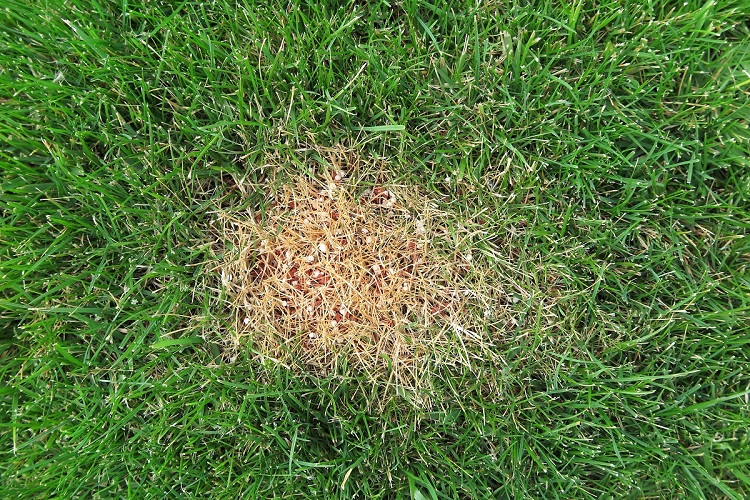
This lawn fungus targets both warm- and cool-season grasses. You can identify it by how it causes patches and rings that can be between four inches and three meters in diameter. It also causes what’s known as smoke rings, which are brown, thin borders around the diseased patches.
Brown patch thrives in high humidity and high temperatures over 86 degrees Fahrenheit during the day and more than 59 degrees at night. If your lawn gets over 10 hours of moisture per day for consecutive days, this can also promote a brown patch, as can cutting the grass to a too-low height.
Besides increasing the cutting height of your lawnmower, you can eliminate and prevent brown patch by reducing shade on the grass, removing thatch, removing dew, and increasing air circulation.
Pythium Blight
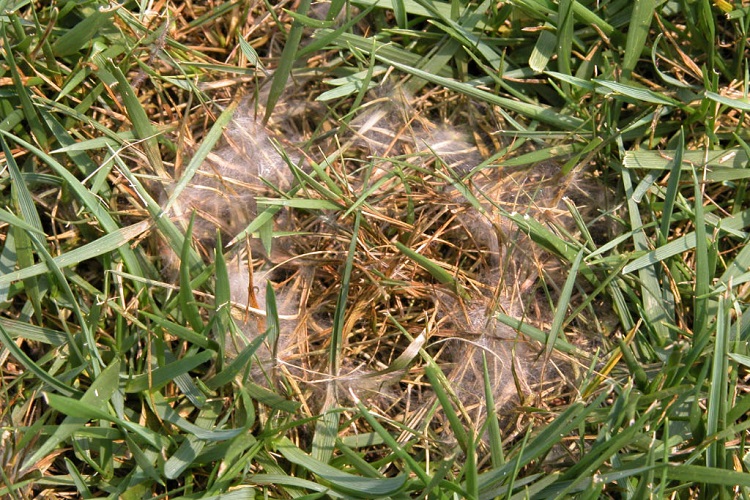
This type of lawn fungus will show up in different ways depending on whether you have cool- or warm-season grass.
In cool-season lawns, this fungus appears as small circular patches that are sunken, whereas in warm-season grass it will appear as purple or black spots that expand into irregularly-shaped areas. It can also show up as streaks, which can be caused by lawn equipment, such as mowers, or flowing water.
Pythium blight symptoms show up during humid, warm weather when the grass is wet for at least 12 hours per day. This disease is especially serious when the temperature during the day is higher than 82 degrees Fahrenheit and night-time temperatures are lower than 68 degrees Fahrenheit.
Remove this fungus by eliminating thatch from your grass, preventing foot traffic on the lawn, and cleaning your mower after use to prevent spreading the fungus. You should also water your lawn early in the morning so that the grass can dry out during the day.
Gray Snow Mold
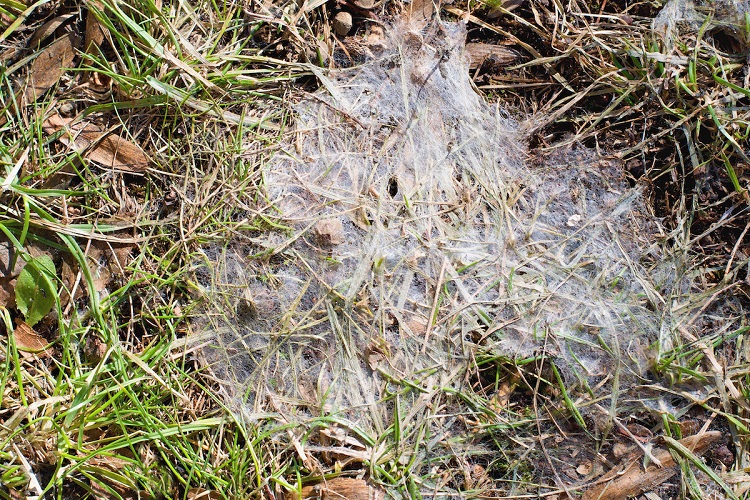
Grey snow mold affects cool-season grass in regions where there’s lots of snow cover for extended periods of time. The mold infection shows up as round patches that are between six and 12 inches in diameter.
If your grass is taller, the patches might be larger but not as well defined. You will notice white or tan-colored crusty patches of dead and matted grass.
Note that you can distinguish gray snow mold from other types of snow mold by how it has small, reddish-brown, round fungal spots called sclerotia that get embedded in the crowns and leaves of grass plants.
To deal with gray snow mold, you should mow your grass during the fall and prevent snowbanks from appearing on the grass – these can happen when you remove snow from your driveway.
Avoid using too much nitrogen fertilizer in the fall. When you notice grey snow mold, rake up the fungal areas to break up the matted, crusty grass. You can apply a bit more nitrogen fertilizer at this point to boost the recovery of your lawn.
Pink Snow Mold
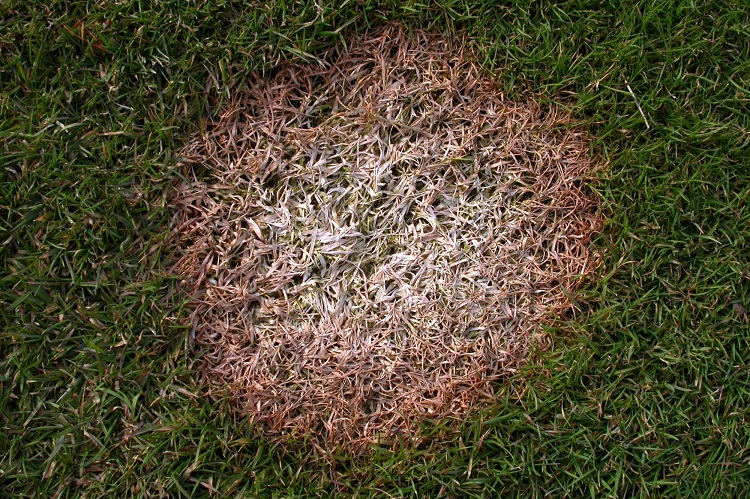
This fungus affects most types of grasses, but usually occurs late in the winter. When a layer of snow traps heat and moisture in the grass, this promotes fungal growth.
Pink snow mold is more hazardous for your lawn than grey snow mold because it damages grass at the roots and crowns instead of just targeting the blades.
Grass affected by pink snow mold shows up as round patches that can be three to 12 inches in diameter. You will also see that the grass within those circles is matted with a fungal coating that can be pink or white in color. When the weather becomes warmer, the grass dies and leaves behind brown patches.
To prevent pink snow mold, make sure that you clear away snow. You should also ensure that your grass is not longer than three inches as this can cause it to become matted and compacted under heavy snow. Finally, remove mulch leaves during the fall before it snows.
Summer Patch
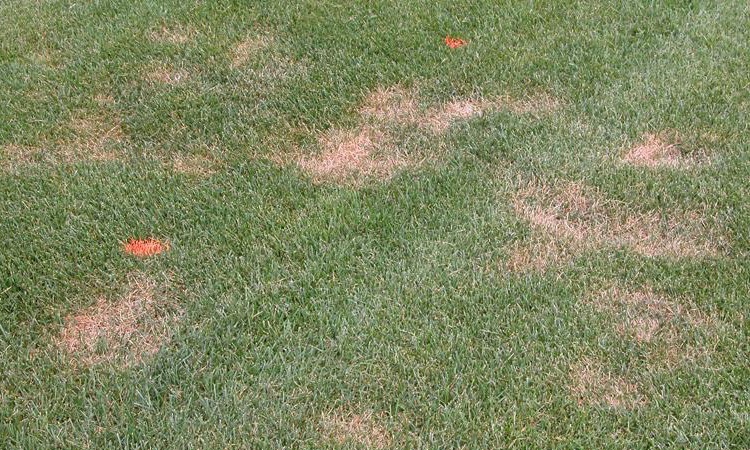
This type of fungus tends to target grasses such as Kentucky bluegrass, annual bluegrass, and fine fescue. Other grass types, such as perennial ryegrass, tall fescue, and zoysia grass, are more resistant to it.
Summer patch shows up as dark green, wilted and irregular circles that can be up to two inches in diameter. You might also see straw-colored rings and patches, and enlarged patches with outer edges that are brown or yellow in color.
The summer patch is associated with hot weather. This fungal infection can show up before summer, though, such as during spring when the soil temperature goes higher than 65 degrees Fahrenheit.
The best way to deal with a summer patch is to apply a fungicide. You have to water it into the root zone of the grass so that it can work effectively.
But, since the summer patch is severe enough to kill the grassroots, you might have to reseed your lawn after it’s battled this type of fungal infection.
You can prevent this fungal infection by not cutting more than two-thirds of the grass length when mowing your lawn.
Necrotic Ring Spot
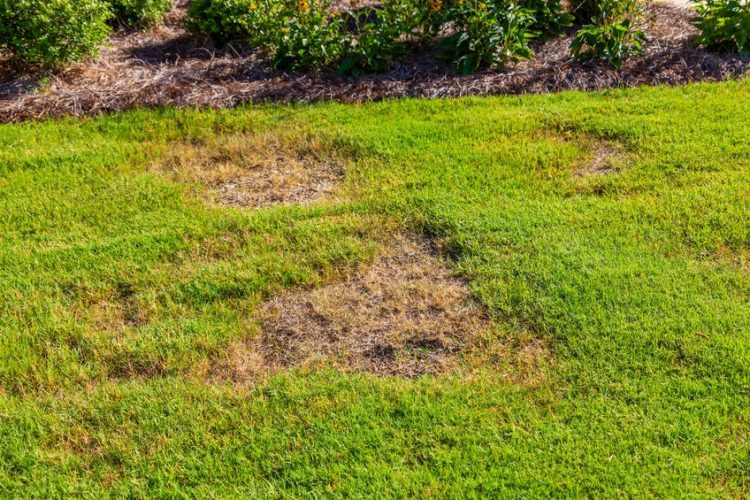
This type of lawn fungus is very severe. It is especially dangerous for Kentucky bluegrass. It appears as yellow or light-green round patches. These patches thin the grass and can be between three and 15 inches in diameter, although sometimes they can grow to around three feet! The patches become brown and die.
The roots of the grass inside the affected area of the lawn will be weak and can turn brown and then black. You might see a “frog-eye” pattern on the lawn.
Necrotic ring spot tends to show up in areas of lawn where there’s a thin layer of topsoil and a rocky layer made up of subsoil.
Treating necrotic ring spot requires patience. You will have to improve the quality of your soil with organic matter and humates that can be spread over it like fertilizer. You should also aerate your soil annually to boost air circulation to the roots and improve water penetration.
Finally, adding sulfur to the soil can help to control the fungal infection. It adds acidity to the soil and roots so that you can reduce how severe the necrotic ring infection can become.
Since necrotic ring spot is found in overwatered lawns, you need to ensure you cut back on how much water you give your grass.
Rust Lawn Disease
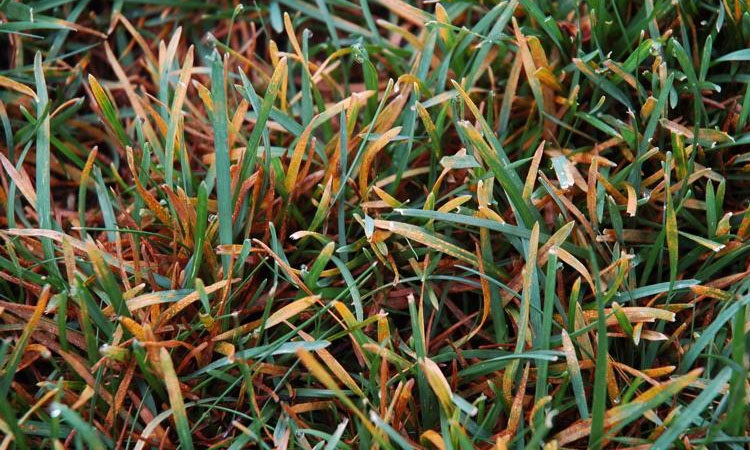
Rust disease tends to appear around the middle of summer all through the late fall when the grass growth has slowed down. But, if your lawn is stressed, then it can occur at any time.
Grass types that have a fine texture and dark green color, such as Kentucky and perennial bluegrass, are especially susceptible to rust lawn disease.
Areas of shade are hot spots for this fungal infection to occur, especially during humid and warm weather. If your grass is wet for long periods of time, such as because of overwatering, this will attract rust fungus.
If the daytime temperatures reach around 70 degrees Fahrenheit or higher, and this is combined with high dew points, this can also be a problem.
You can spot rust lawn disease by how it starts with small yellow spots on the grass. These spots lengthen and become clusters of orange spores. When you touch these spots, they usually have a powdery consistency.
Apply a quick-release, high-nitrogen fertilizer to areas of the lawn where rust disease has shown up. This triggers the grass to grow. Then, mow your lawn regularly, aerate your lawn during spring and autumn, and make sure you fertilize your grass in autumn and spring to keep the nitrogen topped up.
You can also prevent rust disease from appearing in the first place by fertilizing your grass with a nitrogen fertilizer so that it grows thicker. This will strengthen it against disease.
What Causes Lawn Fungus?
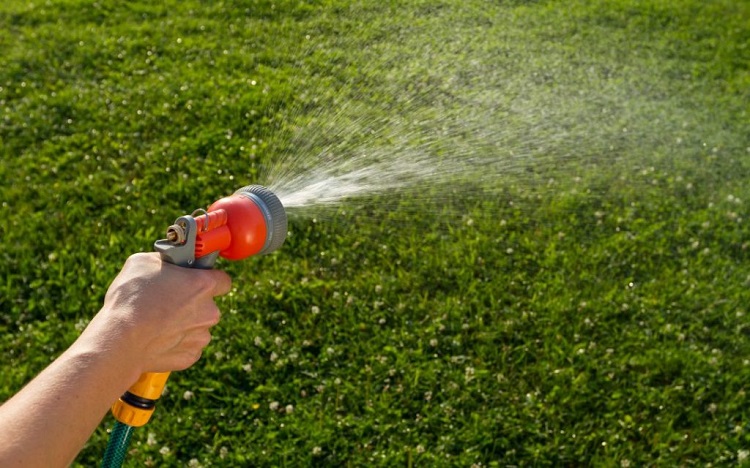
You might feel like lawn fungus is happening beyond your control, but there are things that you might be doing which could be the reason for your lawn being less than healthy. Here are common causes of lawn fungus.
- Drought. If your grass is overwhelmed with dry, hot conditions, this can cause fungus to sprout.
- Mowing incorrectly. If you mow your grass too low, this can make it more susceptible to diseases and fungi.
- Applying fertilizer incorrectly. Putting too much and too little fertilizer can both be hazardous for your lawn health.
- Overwatering. Although drought is damaging to a lawn if you’re giving your grass too much water can also weaken it.
Related Questions
What are humates?
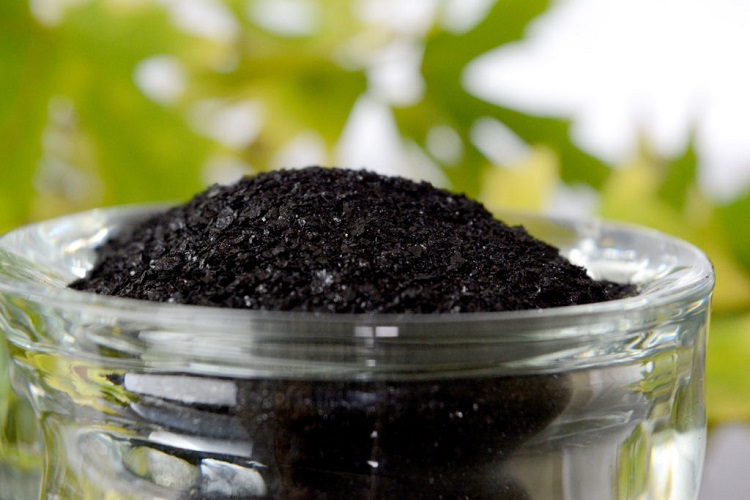
Humates are darkly-colored organic compounds that stick around after biomatter has naturally degraded. These benefit the soil by improving nutrient uptake, microbial activity, and seed germination, as well as stimulating roots.
How can you aerate your soil?
This can be done with a plug aerator. This removes plugs from the soil, therefore clearing the path for greater air circulation.
Plug aeration is recommended instead of spike aeration as the latter causes the soil to be pierced with a spike that causes soil compaction.
Conclusion
If your lawn is showing signs of fungus, you should identify the type of fungus you’re dealing with and how to tackle it so that your lawn can look beautiful again.
In this guide, we’ve given you information on different types of lawn fungi, how to spot them, and how to control them.
Resources:

